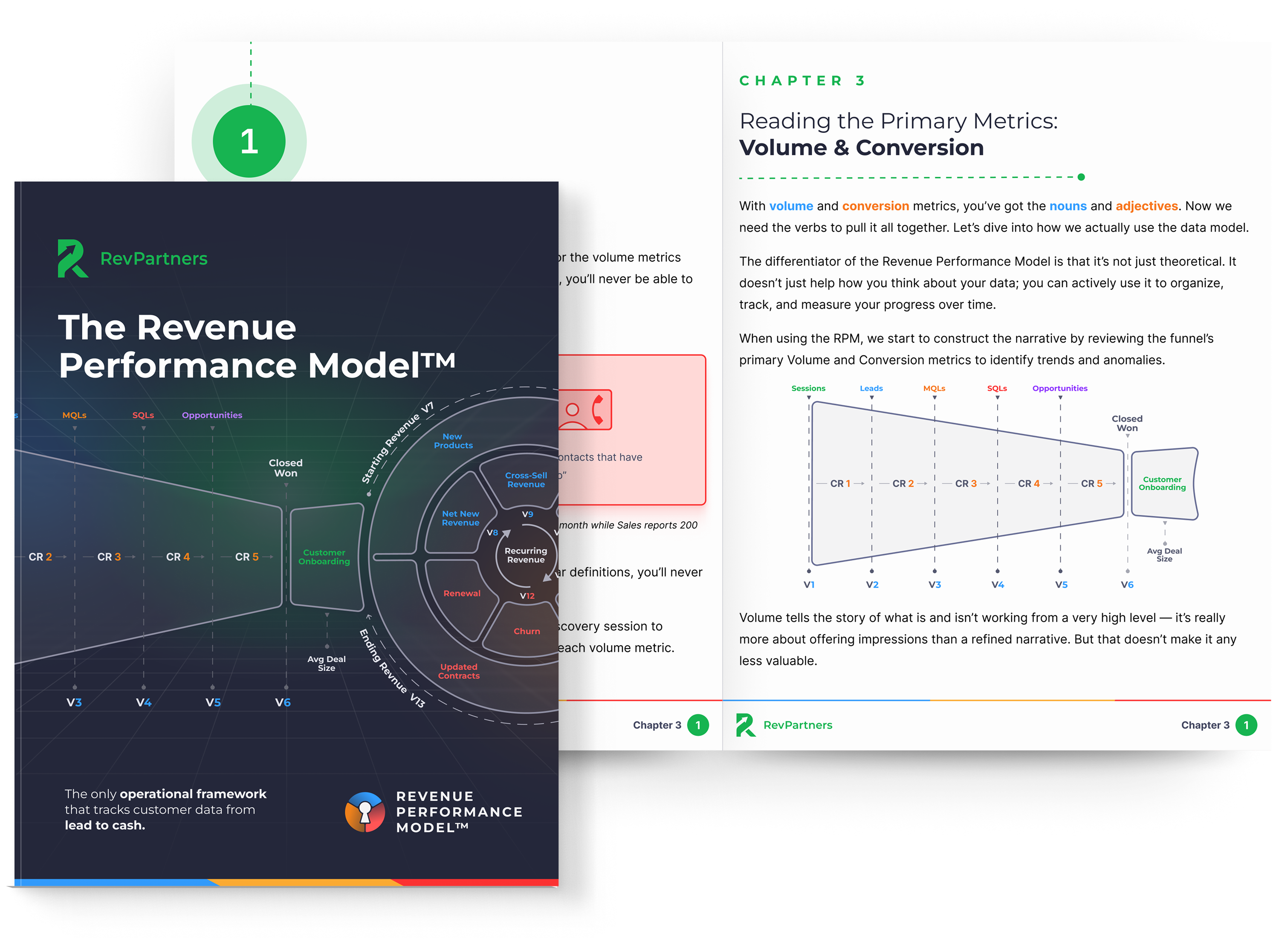Table of Contents
What is Revenue Marketing?
If you ask someone what they do for a living and they say, “I’m in marketing”, that’s almost as vague as saying “I have a job”. There’s outbound marketing, partner marketing, performance marketing, brand marketing, and cause marketing to name a (very) few, and that’s not including any types of digital marketing.
None of these types are “better” than another. Each one fulfills a different role and can be tailored to meet the specific needs of a company. But for those interested in bottom-line results, it’s hard to beat revenue marketing.
Revenue marketing is all about using data and metrics to drive sales and (surprise, surprise) revenue generation. Whereas the traditional marketing approach focuses on building brand awareness and leads generated, this approach ties marketing efforts directly to revenue.
This is mainly accomplished through creating targeted campaigns, utilizing marketing automation, and developing a strong content marketing strategy. The ultimate goal of revenue marketing is to create and execute marketing initiatives that generate a return on investment, such as increasing sales or driving more revenue.
Ok, so does every company do this?
Short answer = no.
A little longer answer = It’s typically used by B2B companies, as it tends to focus on longer-term sales cycles and requires a more data-driven approach, but it can be applied to B2C companies as well.
TL;DR: What Revenue Marketing Really Means
-
Revenue-first mindset: Aligns marketing campaigns directly to measurable sales and revenue outcomes
-
Data and automation: Uses CRM data, automation, and content strategy to drive conversions at scale
-
Sales alignment: Bridges marketing and sales through shared goals, metrics, and lifecycle tracking
-
Metrics that matter: Focuses on CAC, CLV, MRR, ARR, churn, NPS, and conversion rates
-
Built for B2B: Works best with longer sales cycles, lead nurturing, and ROI-driven tactics
Why are Revenue Marketing Strategies Important?
Revenue marketing is sort of the “Just the facts, Ma’am” of the marketing family. It’s not centered on super creative outreach strategies or brightly colored funnels. It’s really all about helping companies to focus their marketing efforts on activities that directly drive revenue growth, a.k.a. marketing ROI. And that’s pretty much it.
By aligning marketing campaign efforts with revenue goals, companies can better understand which marketing activity and tactics are most effective at driving sales and use this information to optimize their marketing budget and resources.
If you’re using HubSpot, explore our HubSpot onboarding services to ensure your marketing platform is set up for measurable success.
Revenue marketing can help companies to better understand their customer acquisition cost (CAC) and lifetime value (see below), which can inform pricing strategies and product development.
Involving the sales team in the process creates clear cut targets and results, making it easy to collaborate and have alignment among sales and marketing teams. It helps in better understanding the customer journey and creating customer personas which in turn help in creating better customer engagement strategies.
How do you know if this is all being done correctly? Simple: track the right revenue operations metrics.
For expert guidance, check out our HubSpot technical consulting services to ensure your systems are set up to track the metrics that matter most.
What are the most important metrics to track in revenue marketing?
Great chefs will tell you that you should taste your food as you're making it so that you are able to make adjustments before the dish is finished. In the same way, it’s good to evaluate your revenue marketing key metrics so that you are able to make adjustments to your strategy.
Here are some metrics definitely worth looking at to alleviate pain points:
Conversion Rate
Branding is big. Every company wants the perfect logo, a unique social media voice, and the cleanest looking website around.
While those things are certainly nice to have, they’re worthless if they don't result in your target audience purchasing your product or service. Conversion rate measures the percentage of visitors to your website who actually become paying customers. If you're getting a lot of traffic but not seeing many conversions, it's time to optimize your sales funnel.
Average Order Value (AOV)
Having a lot of people engaging with your website is good; having a high percentage of those people become paying customers (high conversion rate) is great; having each customer spend a large amount of money is amazing. AOV tells you how much money each customer is spending on average. If your AOV is low, you may need to work on upselling or cross-selling strategies to boost revenue.
Monthly Recurring Revenue (MRR)
If you were constructing a Mt. Rushmore of revenue marketing metrics, this might be the first one you would chisel in.
MRR is the amount of money you can expect to bring in every month from your customers (i.e. it's the ultimate measure of your recurring revenue and the health of your business). Bottom line: if this goes sideways, you may not be able to afford to keep the lights on.
Annual Recurring Revenue (ARR)
This is similar to MRR, but instead gives you a broader picture of your company's revenue. It’s the total amount of money you can expect to bring in each year from your customers, and can therefore be very helpful in forecasting future revenue growth.
Customer Acquisition Cost
MRR and ARR track money coming in, which is obviously important, but so is tracking money going out. That’s where customer acquisition cost, the total amount of money you spend to acquire a new customer, comes into play. When this number is high, it means you’re spending more money than you’re making, and you don't need an MBA to know why that’s bad.
Customer Lifetime Value (CLV)
When you’re waiting to board a plane and you hear announcements for groups such as “Executive Platinum”, “Diamond Medallion members”, or “Premier 1K” to go ahead and board first, you’re witnessing a business honoring their most valuable customers. These people do a ton of flying and an airline wants to do all they can to keep them as customers.
That’s customer lifetime value in action. It’s the total amount of money existing customers will spend on your products or services over the course of their lifetime, and it’s one of the most important revenue marketing metrics to consider because it helps you identify your most valuable customers and optimize your marketing efforts to retain them. The higher the CLV, the more profitable a customer is for your business.
Net Promoter Score (NPS)
The goal of most companies is to have potential clients become reliable, long-term purchasers of their goods or services. There is a step beyond this though, and it’s when your customers essentially become evangelists for you. NPS is a metric which measures the customer experience and how likely your customers are to recommend your business to others. Obviously, the higher the NPS, the better!
Churn Rate
Here’s the phrase every company hates to hear, but desperately needs to measure and track accurately. Churn rate is the percentage of customers who cancel their subscription or stop using your product over a given period of time.
Translation? You’re losing customers!
A high churn rate means your customer retention rates are down, and you need to reevaluate your strategy. If there is one metric you can’t afford to ignore, this is it.
How can revenue marketing and RevOps work together to accelerate business growth?
Although revenue marketing isn’t new, it has recently become more popular with the rise of RevOps. Putting together a solid plan for managing your company’s revenue goals can be daunting when you look at the number of metrics available (we didn’t even cover them all!) in measuring the success of your marketing strategies.
A good idea? Invest in RevOps. The companies that do experience a 2.7x higher revenue growth rate.
Need a fresh start? Our HubSpot migration services make it easy to move your data and systems into a revenue-focused CRM.
An even better idea? Turn over your revenue operations to revenue professionals.
The Revenue Performance Model
Do you want to track the entire revenue journey in your CRM so you can see what's broken, why it happened, and where to fix it?
Download the Revenue Performance Model HERE
.png)



-3.png)
.png)
